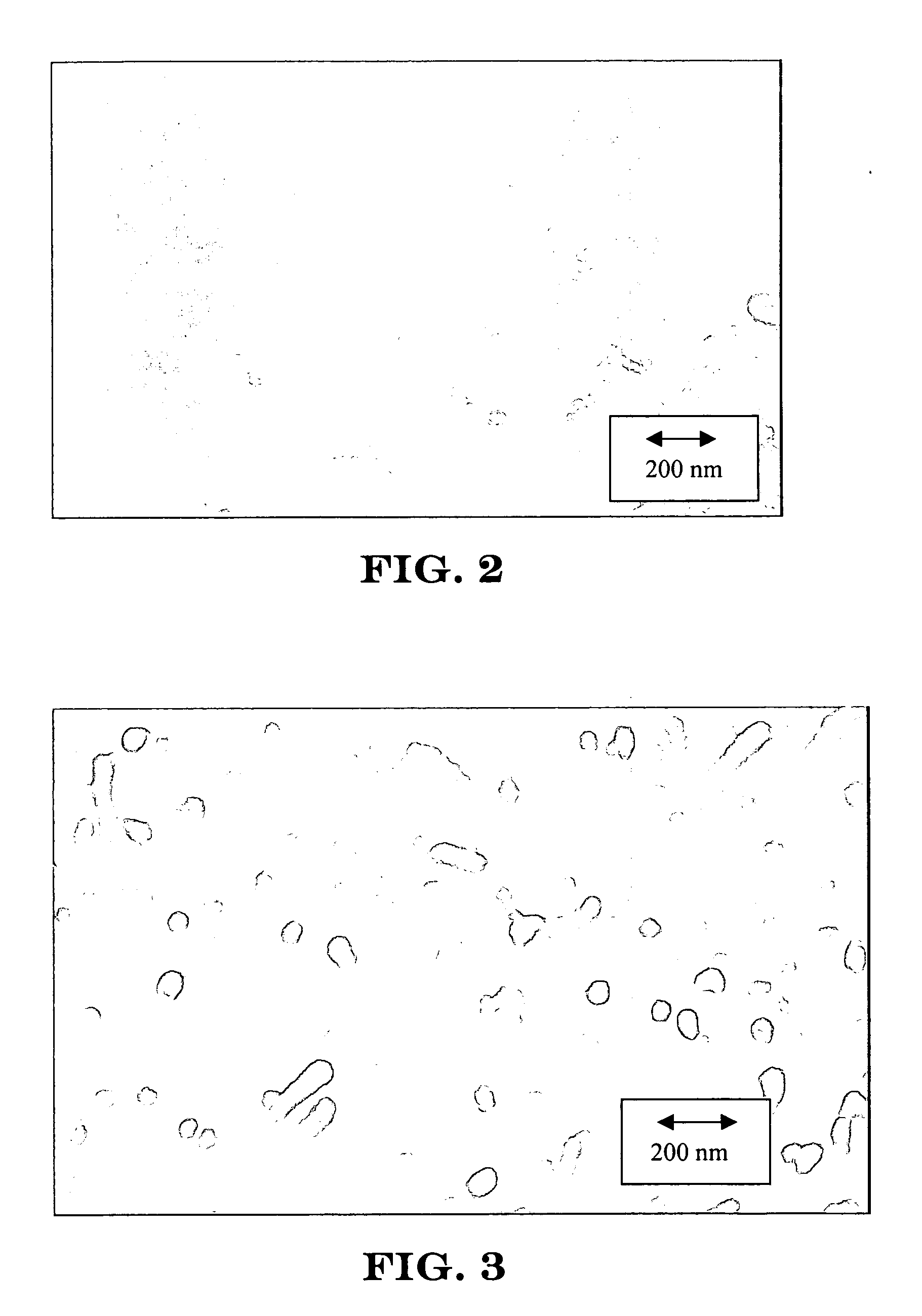Nanotube-containing composite bodies, and methods for making same
a composite body and nanotube technology, applied in nanoinformatics, semiconductor/solid-state device details, nanoinformatics, etc., can solve the problems of insufficient durability of low-expansion polymer composite materials, deficiency of glasses, and difficult processing, and achieve the effect of tougher and/or more impact resistan
- Summary
- Abstract
- Description
- Claims
- Application Information
AI Technical Summary
Problems solved by technology
Method used
Image
Examples
example i
[0078] This Example, demonstrates, among other things, the successful incorporation of carbon nanotubes (CNTs) into a metal-ceramic composite material and in particular, the survivability of the CNTs during infiltration processing with the metal in a molten condition.
[0079] About 3.86 g of chemical vapor deposition (CVD) grown multi wall carbon nanotubes (Iljin Nanotech Co. Ltd., Seoul, Korea) were mixed with about 42.64 g of phenolic (SC1008 from Borden Chemical Inc., Louisville, Ky.) to make a mixture. The CNTs diameter ranged from about 10-50 nm. The mixture was poured in a rubber mold with a cavity measuring about 5 by 5 by 1.3 cm. The rubber mold was placed on a vibrating table for about 12 hours. A thin TEFLON® sheet measuring about 5 cm square was placed on the mixture in the mold. A graphite block measuring about 5 by 5 by 2.5 cm (and having a mass of about 225 g) was placed on top of the TEFLON® sheet. The mold was then placed in a curing oven and heated to about 140° C. f...
example ii
[0086] This Example, demonstrates, among other things, the successful incorporation of carbon nanotubes (CNTs) into a metal-ceramic composite material also containing another filler or reinforcement material.
[0087] About 50 g of SiC powders consisting of a 70:30 weight ratio of 240 and 500 grit particulates (Saint Gobain / Norton Industrial Ceramics, Worcester, Mass.), 2 g CNTs, about 20.93 g phenolic and about 15.6 g THF (solvent) were hand mixed in a beaker to make a mixture. The mixture was poured in a rubber mold with a cavity measuring about 5 by 5 by 1.3 cm. The rubber mold was placed on a vibrating table for about 12 hours. A thin TEFLON® sheet measuring about 5 cm square was placed on the mixture. A graphite block measuring about 5 by 5 by 2.5 cm was placed on top of the TEFLON® sheet. The mold was then placed in a curing oven and heated to about 140° C. for about 3 hours and then cooled to room temperature. A cured, stand-alone preform was produced after demolding. This pref...
PUM
| Property | Measurement | Unit |
|---|---|---|
| diameter | aaaaa | aaaaa |
| diameter | aaaaa | aaaaa |
| vol % | aaaaa | aaaaa |
Abstract
Description
Claims
Application Information
 Login to View More
Login to View More - R&D
- Intellectual Property
- Life Sciences
- Materials
- Tech Scout
- Unparalleled Data Quality
- Higher Quality Content
- 60% Fewer Hallucinations
Browse by: Latest US Patents, China's latest patents, Technical Efficacy Thesaurus, Application Domain, Technology Topic, Popular Technical Reports.
© 2025 PatSnap. All rights reserved.Legal|Privacy policy|Modern Slavery Act Transparency Statement|Sitemap|About US| Contact US: help@patsnap.com



